![]() The importance of precise, well-aimed fire in a gunfight cannot, and should not, be underestimated. For anyone who picks up a firearm with the intent of “going in harm’s way,” that statement should really be pretty close to the forefront of their mind, throughout any training that they do, regardless of where they do that training, when they do that training, and with whom they do that training. If, after all, I’m in a gunfight with some dude 200 meters away, or 20 feet away, and I just point my weapon in the air, shout, “Allahu Akbar! Inshallah!” like some Mohammedan jihadist, and start blasting, counting on some divine will to guide my rounds where they need to go, I’m not likely to do much good in the pursuit of self-protection. The further away the opponent is, of course, the more critical the ability to aim and fire accurately becomes, because he becomes a relatively more difficult target to hit.
The importance of precise, well-aimed fire in a gunfight cannot, and should not, be underestimated. For anyone who picks up a firearm with the intent of “going in harm’s way,” that statement should really be pretty close to the forefront of their mind, throughout any training that they do, regardless of where they do that training, when they do that training, and with whom they do that training. If, after all, I’m in a gunfight with some dude 200 meters away, or 20 feet away, and I just point my weapon in the air, shout, “Allahu Akbar! Inshallah!” like some Mohammedan jihadist, and start blasting, counting on some divine will to guide my rounds where they need to go, I’m not likely to do much good in the pursuit of self-protection. The further away the opponent is, of course, the more critical the ability to aim and fire accurately becomes, because he becomes a relatively more difficult target to hit.
There is a line, famous in shooting circles, attributed to Wyatt Earp, and all too often parroted by others, with varying degrees of accuracy in the retelling, that says, “Speed is fine, but accuracy is final!” There is, in the opening sentence of this article, a great deal of recognition of the inherent truth of this statement. Performing a mag dump of 9mm or 5.56, is really of limited, questionable value (I can actually argue for the value, but it is still limited…); it’s of no value whatsoever though, if none of the rounds I fired even impact close enough to impact the target’s decision-making ability. Accuracy really is critical. Too often however, that statement becomes nothing more than a cliché, and an excuse for codgy old duffers to take their sweet time sighting in to take a shot.
The problem with a cliché, it has been said, is not that they’re untrue. The problem with a cliché is the nugget of truth inherent to the statement, that allows it to become a cliché, repeated ad nauseum, by sycophants who generally don’t realize that they don’t even understand the meaning behind the original statement. I get called to task, rather often, by readers and others, who have completed various training courses, for my ongoing training admonition that we should be practicing the ability to “shoot as fast as you are able to apply well-aimed fire.” Perhaps it is the “shoot fast” part that gets their knickers in a twist, but I just genuinely haven’t been able to figure it out.
Accuracy is Awesome!
At the basic level, any shot accurate enough to punch through the brainstem of a bad guy is definitely a final statement, and probably adequate to “elicit the desired response,” to a situation that warranted shooting him. The problem is, the real world likes to toss monkey wrenches in our plans.
If it takes you five seconds to manage that shot; to acquire a solid firing position, line up your sights, control your breathing, and then gently squeeze the trigger to a surprise break, with no disruption of the sight picture, it’s probably not going to be the “final answer” that you think it is.
Why not? Because, whether rifle or pistol, five seconds is long enough to dump nearly an entire magazine, accurately, at common combative ranges. You’re not going to get that five seconds of calm that you apparently need, in order to get the level of accuracy that you need to make that precision shot. That is the crux of the problem with the cliché. It’s not complete.
Fast is Fine, but Accuracy is Final… As Long as it Arrives On Time!
My statement for students, and myself, mirrors a related aphorism that comes to us courtesy of Marshal Earp; “Take your time…In a hurry.”
“Fast is fine, but accuracy is final…as long as it arrives on time.”
What is all too often overlooked is that the speed versus accuracy equation is a very, very relative issue. Is a shot that impacts you in the shoulder as lethal as a shot to the upper thoracic cavity or the cerebral cortex? No, of course not, unless you’re a simpering coward who believes that any gunshot is automatically lethal, as it blows you backwards through four concrete walls. What if we change the question slightly?
“Is a shot that impacts the shoulder as effective at keeping you from shooting me as a shot to the upper thoracic cavity or cerebral cortex?” Probably, at least in the immediate short-term. Gunshot wounds have a tendency to hurt, and pain tends to be distracting.
I may need to shoot you again, but if you’re not shooting at me effectively—by which we mean, making hits—because you got distracted by that Louisville Slugger shot to the shoulder, then I’ve got the time necessary to slow down and take that second shot.
On the other hand, it can obviously be said that, if you take the time to get a shot to the upper thoracic cavity or the cerebral cortex with the first shot, you won’t need to take that second shot, right? Let’s go back for a moment, and look at the previous example, to parse that concept. If you are taking the time to set up that head shot to the cerebral cortex, and I bust a round into your shoulder, or chest, or leg—or, well, pretty much any other portion of your body—is that, or is that not, going to affect your ability to aim and fire your precision head shot? Of course it is. So, what we really need to determine is, how accurate do we need to be? How fast do we need to be that accurate? How much of that accuracy can we maintain, at that speed?
Accuracy Standards
In order to effectively discuss accuracy standards, we need to determine what type of weapon we’re discussing, carbine or pistol, and we need to determine what ranges we’re discussing.
With rifles, some trainers—a lot of trainers, actually—and the US Army, consider 4MOA to be adequate accuracy. That’s a pretty decent all-around metric, and it is one that has a lot of history in the US military. That allows you to hit a 19-inch wide e-type silhouette out to 500 meters, most of the time. That’s pretty solid, and beyond the ability of most “riflemen” in the US today. At 100 yards, that is roughly four inches. That definitely facilitates getting accurate hits, on a stationary target.
My personal standard—firing commercial, Lake City M855 “green tip” out of a mil-spec 1:7 twist, chrome-lined, 14.5” M4, so you know I’m not running some cool guy, super custom gun—is 2MOA or better. That theoretically allows me to get hits on the aforementioned e-type at 1000 yards (theoretically…while I’ve actually gotten consistent 1.5MOA groups out of my main carbine, that doesn’t take into account windage, knowing my holdovers for elevation, or accounting for the transonic effect of the round dropping back below supersonic speeds, which leads to all kinds of hinky behavior from the projectile). At realistic, common combative ranges, that’s way more than adequate.
It’s crucial though, to remember that we’re talking about pure marksmanship standards at this point. This is laying on a nice, groomed range, in a solid firing position, controlling my breathing, and taking my sweet time squeezing the trigger, because the target’s not moving, and it’s not shooting back at me. Accuracy after all, really is relative.
Here’s the thing though….so is speed, and the two are relative to necessity and ability, as well as to each other. I can shoot 2MOA or better with my carbine, taking 1-2 seconds per shot, whether I’m prone, squatting, kneeling, or standing. If I am willing to “broaden my horizons,” and accept a 4MOA group, I can put rounds downrange, from prone, squatting, or kneeling, at a rate-of-fire approaching 3-5 rounds per second. From the standing, I can easily do 8MOA at the 4-5 rounds per second rate-of-fire, and regularly manage to fire a sub-6MOA at five rounds per second, at 100 meters, from the prone, and standing, I can manage it 8-9 times out of ten. That is fast, and accurate, and it’s impressive, but it is nowhere near world-class. It is not a result of being genetically gifted, or spending hundreds of thousands of dollars on IPSC/IDPA race gun training. There are guys out there, in the public eye, and in the shadows, who can shoot that accurately, at an even faster rate of fire. My ability is simply a result of dedicated, steady yeoman-like practice.
When I teach, I successfully get students making solid hits on a C-zone steel target, at various ranges, in ridiculously fast times:
- Standing, from the ready, at 100 yards: <1:00 second
- Standing to prone, from the ready, at 200 yards: <3:00 second
- Standing to kneeling or squatting, from the ready, at 100-200: <2.50 seconds
(These are not all hyperfit, twenty-something Crossfit junkies. These are solid, middle-aged, professionals, willing to put in a little bit of effort.)
With a sidearm—in my case a 9mm Glock, either a G19 or a G17—we’re still looking at a mathematical range of possibilities for accuracy standards at speed. From a pure accuracy standpoint, the standards I set for myself, and that I drive students to achieve in coursework is to be able to shoot the proverbial “one-hole group” at any distance out to 30 feet, with no time limit. This is simple, pure marksmanship. Out to 25 yards, we are looking to keep everything inside of a 3×5 index card. It doesn’t always happen, but that’s the goal. Inside of the A-zone of an IPSC silhouette is certainly a 100% achievable goal at that distance. At 50 yards, we should be able to consistently hit a C-zone sized target.
When it comes to balancing that accuracy with speed, there are a lot of variables at play. Personally, I strive for, and typically maintain, a sub-1:00 second draw from concealment to first shot, to a 3×5 index card, out to 30 feet. For students in coursework, I expect them to be able to hit that 3×5 index card, out to 30 feet, every time, from a concealed drawstroke, in less than 1.25 seconds, by the end of a three day class. Typically, by the morning of Training Day Three, 80-90% of students are achieving it, with relative ease.
How Do We Achieve This?
The method I use to build this skill, at the basic level, is identical, whether we’re discussing clandestine carry pistol, or fighting carbine.
- We build the basic neural motor pathways, by lots of dry-fire and live-fire repetitions of the basic skill, without any time pressure.
- Once the skill seems to be getting drilled in, I will test each student individually, having them perform the basic drill as fast as they can, while still feeling absolutely confident that they can do it right. If they get it wrong, we do it again, slower. Once we have a time for students, we have a baseline time to improve from. If you don’t know where you’re at, you can’t navigate to where you want to go, right?
- In a class environment, we will start with the slowest time, and we will perform ten to twenty repetitions, dry-fire, at that time, minus one-tenth of a second. Once we’ve done the repetitions, and even the slowest student sees that he can go 1/10th of a second faster, we test it live-fire. Then, we go 1/10th of a second faster still, and repeat. By “forcing” the students to go faster, they get faster. If we find someone starts missing, from pushing too fast, we’ll stay at that time standard for some extra repetitions, until they are getting it.
Using this exact methodology, I’ve had complete novices manage to make C-zone hits in sub-1:00 second at 100, with a carbine, in less than four training hours. I’ve had students in my Clandestine Carry Pistol course, who had never drawn their weapon from concealment, getting hits on a 3×5 index card, at 30 feet, in less than 1.25 seconds, in less than a complete eight-hour training day.
The secret, as I understand it—and I’m no neuroscientist, so keep that in mind—is that by “forcing” ourselves to go faster, while maintaining our accuracy standard, we are actually “allowing” our brain to do what it is wired to do, which is train our nervous system to perform more efficiently.
Conclusions
Speed and accuracy are relative. Ultimately, for your combat-effective marksmanship training, you have to decide what is adequate accuracy for you, both for pure marksmanship, and marksmanship at speed, under stress. Then, you have to decide how fast you can achieve that level of accuracy. What I can tell you, with absolute certainty, is that, if your “pure marksmanship” standard of accuracy is 4MOA, you are not going to be able to pull off 2MOA, for a speed standard, under stress.
There are caveats to these considerations, of course. In the real-world, as opposed to the range, there are probably going to be non-combatants downrange. Suddenly, you’re going to have to slow down anyway, to ensure that a) the dude you’re shooting is actually a bad guy, and b) if you do miss the bad guy, your round isn’t going to go past him and center-punch somebody’s seven year old. If we’ve set ourselves up for success by shooting with extreme precision, at extreme speeds, in training, we make the ability to make those decisions and shots more realistic. The underlying rule needs to be, “Don’t shoot any faster than you’re able…but be able to shoot as fast as you need.”
At the end of the day, for me, snapping one-second shots at 100M, or drawing and firing at 10 meters, in sub-1:00 isn’t about the time recorded on the timer. It’s not about “how fast I am!” It is about building those neural pathways to be so efficient that I no longer have to think about them in order to execute the task correctly, and efficiently. It works, and it works well.

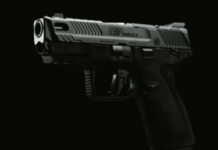


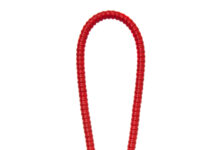
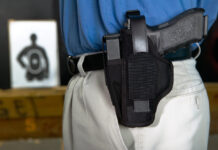
![Are Compensators Worth It? [Video]](https://preparedgunowners.com/wp-content/uploads/2025/07/Depositphotos_815431992_S-218x150.jpg)
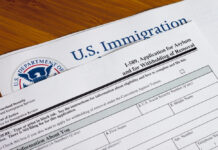

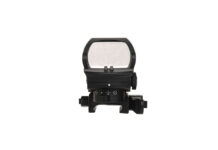
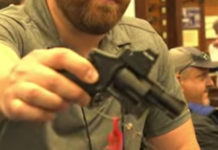

![Would-Be Robber Takes The Tueller Drill Challenge [Video]](https://preparedgunowners.com/wp-content/uploads/2025/10/Depositphotos_50626839_S-218x150.jpg)
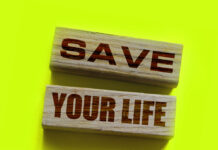
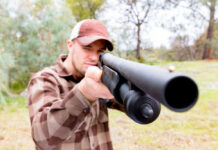
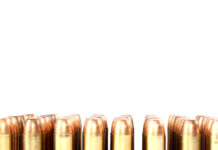
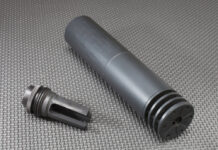

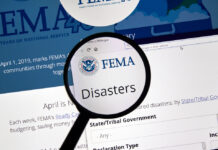
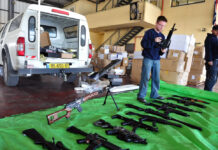










![Are Compensators Worth It? [Video]](https://preparedgunowners.com/wp-content/uploads/2025/07/Depositphotos_815431992_S-100x70.jpg)
![Optic Ready vs Milled slides? [Video]](https://preparedgunowners.com/wp-content/uploads/2024/02/image-3-100x70.png)
![[Checklist] What Gear You Need To Take Pistol, Rifle & Shotgun Training Courses [Video]](https://preparedgunowners.com/wp-content/uploads/2023/07/Depositphotos_275087632_L-100x70.jpg)
![What is in Carter’s 2023 EDC? [Video]](https://preparedgunowners.com/wp-content/uploads/2023/07/Depositphotos_146856137_L-100x70.jpg)



Great read and invaluable info. Very specific in terms of parameters AND gauging progression through constant evaluation. Keep it coming John!
Thanks for making the point that you don’t have to be range accurate in a gunfight, just accurate enough.
Goof Article, Jon. I think we went to ‘different schools together’ and the conclusions are similar, but somewhat different. I don’t like whipping ‘credentials’-especially of the grizzly gory zombie details-on anybody, but lets just say, my experience in life with combat shooting was predominately of the empirical task, not the experimental gel block club. That’s not to say I didn’t compete and hold my own in competitions and such, it’s just that after a while, I realized they didn’t mean very much in real time ‘high speed low drag’ combat.
First of all, with regard to the ‘speed’ factor. I will have to say, and prove beyond any doubt if anyone wants to risk explaining to their missus why they blew all their disposable income betting some old hustler who never
loses, that SPEED always RULES in just about anything in life (which is why the totalitarian social engineers proliferated the Hare and the turtle myth. So they could have the life ‘speed’ advantage, i.e., ya snooze, ya lose).
In gun fighting which is highly ‘depending’ on situations and types of tactics and particular intensity of combat and firepower, speed is perhaps not so critical, but then neither is accuracy. Bombs/mortars/artillery kills as many or more soldiers than small arms fire. And they never were MOA? LOL! Hence the term ‘Superior Firepower’ Which always wins, which always means ‘overwhelming’ suppressive firepower.
So back to daily carry style gunfights in dark neighborhoods, mostly ambush style, with just your pistol?
Speed of action, not exclusive to firing shots, ALWAYS trumps accuracy. Next is superior firepower in the form of either powerful rounds or multiple shots/hits. For anal retentive Shitgun afecianados who think their 12 is better than my 5,56 M-16 PDW at ANY range in terms of laying down one stop hits in rapid succession get a jaw dropping lesson in reality ballistics and mechanics when I beat them hands down even if they’re using an auto.
Especially when I have more than enough rounds left in my 100 round C-mag to do the drill all over again, and they don’t. And for actual stopping power, if you do the math, one pull of the trigger for one 12 ga, Mag round with 9 OO buck pellets against my one pull 9 round split second burst of 5.56 bullets, even in standard fmj, makes the buckshot look a little anemic by comparison.
Which brings up the last reality here. Ready? Aim shooting is not and will never be as fast as Point/Instinctive shooting. Accuracy notwithstanding to the point of irrelevancy, as long as you LEARN HOW to master POINT SHOOTing to the 95% hit ratio, with rapid follow up shots. The accuracy of specific location hits is simply not that important in a street self defense situation.
FAST Instinctive/Point shooting in CQC is far superior than any other shooting. They taught this in Army Ranger shool once upon a time and I remember we used the Daisy lever action bb rifles and they used half dollar size model car rubber tires with the plastic wheel replaced by cardboard and the instructor would toss them up a few meters at 45 degrees and trained us how to raise and track and fire and HIT it with repeat success after only a couple sessions. Like skeet training. Unfortunately with the later OCD’s with sights and dots and lasers, good effective point shooting became a lost art.
When old Hiram invented the water cooled belt fed infantry carried machine gun it changed the entire course of warfare and the ways in which they were fought on the ground. And they were rarely actually AIMED during a major attack battle where human wave style assaults took place. Just two machine gun ‘nests’ with a large supply of ammo set up in an optimum cross fire over an advancing enemy could reduce hundreds of running soldiers to vulture snacks in only a few minutes just by steadily strafing watching only the tracers and pointing accordingly. Accuracy was not that critical in this type of combat. The general direction was still potentially 100% lethal because if you were low the ricochet could still get others following behind, as well as a high shot could. and most shots, in any case, could continue on through two to even 4 enemy. But Speed was important in making sure you reloaded quickly and quickly got back into rapid target acquisition and terminally suppressive firepower mode.
And your hit location analysis is one that I’ve always subscribed to and taught this concept to advanced operators -with a considerable modification to the agenda based ‘two to the CM and one to the head’ training that amateur wannabe instructors teach wannabe cop civilian CCW holders. (You know the real reason they teach CM hits? Hint, it’s not because it’s easier hit to make)
Back in the early jungle days, after a couple years we thought we were improving our kill ratios by becoming better marksman as a result of almost daily missions and weekly enemy contacts. our Team weapons were iron sight 16s with 1 in 14 inch twists in barrels but found out that after a few thousand rounds wear they began keyholing a short distance out of the barrel So just about any cm hit was quickly down and fatal and virtually all tumbling round hits were instant incapacitation and down, so some guys on the team tried to ‘trick’ the end of the barrel to force the keyhole effect. But just by itself, a bone hit in the shoulder by a 5.56 fmj bullet would literally explode the shoulder. And of all, and I mean ALL the various wound channels I’ve seen by military firearms, not many, if any, would be immediately returning fire after being hit almost Anywhere, which would give a trained operator more than enough time to continue a firing solution or quickly fall back out of danger from return fire.
My short comment on this, of course, doesn’t cover all the nuances to this departure from conventional aiming wisdom, um, I mean ignorance, but to those who at least critically try to improve on reality analysis…the ‘Point’s’ been made.
I would also be willing to bet, that if you really researched old Western gunfighting in one on one confrontations in bars and alley ambushes, you might be surprised to learn that they almost exclusively used hip shot point shooting, lol. That’s how the ‘fast draw’ legends were enhanced. You’d never see them assuming the two hand grip and taking the time to get a proper sight picture, HAhHaHA!
I doubt that old Wyatt ever said anything like ‘Fast is Fine, accuracy is final’ Unless he was trying to ‘disinformation’ the adversarial context of his job function. Because while somebody is taking precious split seconds trying to aim at you, you could be disrupting that process with various nevertheless painful and momentarily shocking ‘inaccurate hits’ on his body until he fell from the sheer volumentric efficiency of firepower. Accuracy is relative, but the NEED for Speed in deadly confrontations IS ALWAYS a priority. Even if it just means being able to extricate oneself from the danger before it can occur?
Great response MM. Enjoyed its depth.
I agree with some points you make, but some are irrevalent for civilians in modern times. How can you compare indirect artillery fire with say a concealed pistol?! No shit bombs killed lots of men and they weren’t surgically placed. All of your examples you cite in which “ignorant” aiming is not needed, you mention maxim machine guns, mortars, artillery etc, ok so your of the school of accuracy by volume. Don’t get me wrong speed IS important in gunfighting. But as a civvy, if I have to engage in a gunfight, chances are I won’t have the ability to call in airstikes, artillery or have machine gun nest to set up over lapping fields of fire. If I happen to find myself in a shitty spot and 3 punks wanna rob me, I won’t be mashing the trigger spraying rounds amongst the 3 of them. I’ll fire 3 head shots in under 2 seconds and be done with the problem. And I unlike the majority of the obese gelatinous assed gun culture practice on a daily basis. John’s articles don’t fall on deaf ears. Purposefully ruining a rifles barrel to get bullets to keyhole?! Lol that’s some backwards ass bullshit right there. No thanks, I like my weapons ability to put rounds exactly where I want them.
My understanding is that Wyatt discussed shooting fast accurately as the goal. Just enough and only enough pause in draw to shoot so that you hit the target. Another rather famous accurate and very fast shot was Ed McGivern. Worked with his Niece for years, we are both retired Postal Letter Carriers. Eds record with two 38 special double actions at 21 feet holster to completion 2 fifths of a second draw fire and place five shots into a playing card. Fired two gun. A very unassuming looking man but a great trick shot artist with pistols and rifles of the day. His life story is great reading.
Great read and valuable info to stir in your head when training.
Semper Fi
I could have sworn it was Bill Jordan who made the quotes about speed and accuracy, and to take one’s time…in a hurry. His book “No Second Place Winner” is still out there, and is a basic primer on shooting fast and accurately in a gunfight. Highly recommended…a master In the art. And the things he talks about in the book he backed up with practical exhibitions. I know, I had the opportunity to witness five of his demonstrations down through the years.
I have never been in a firefight, nor in the military. It seems to me that practicing with your firearm is a great start and you get to know it. If you can not wait to take the first shot, maybe you just have to trust your brain. Hand to eye coordination works wonders.
How many times have you “almost” been an automobile accident? At the crucial point, you brain and the chemicals dumped into your bloodstream made it possable for you to pilot that vehicle just enough to avoid impact. Sometimes this means getting on 2 wheels, other times you make the vehicle do things you have never done in a vehicle.
This is trusting your “fight or flight” impulses. Train with your “go to” gun(I won’t say CCW, since many of us do not need one or it is impossable to get one). If you put in the time with your weapon, practicing and knowing instintively what position the safety is and if there is a round in the chamber, you could just have to look for some cover and shoot the bad guy before he gets you – just be ready to jump if it doesn’t work. I would think that you might be able to get off 3 or 4 rounds before you duck behind that concrete flowerpot with a Ficus tree inside. Take a couple of nano-seconds to get out your replacement mag and figure out how you are going to aim and fire, if what you just did failed. Somehow, I think that the BG will be down, but I like happy endings.
You element of suprise by fighting back could save many lives. A spree shooter is looking to make a statement, not nessesarily at you. You have to act before he gets the tunnel vision and main focus on you. This works in sports, too.
[…] Math for Marksmen: The Speed Vs. Accuracy Equation […]
Comments are closed.